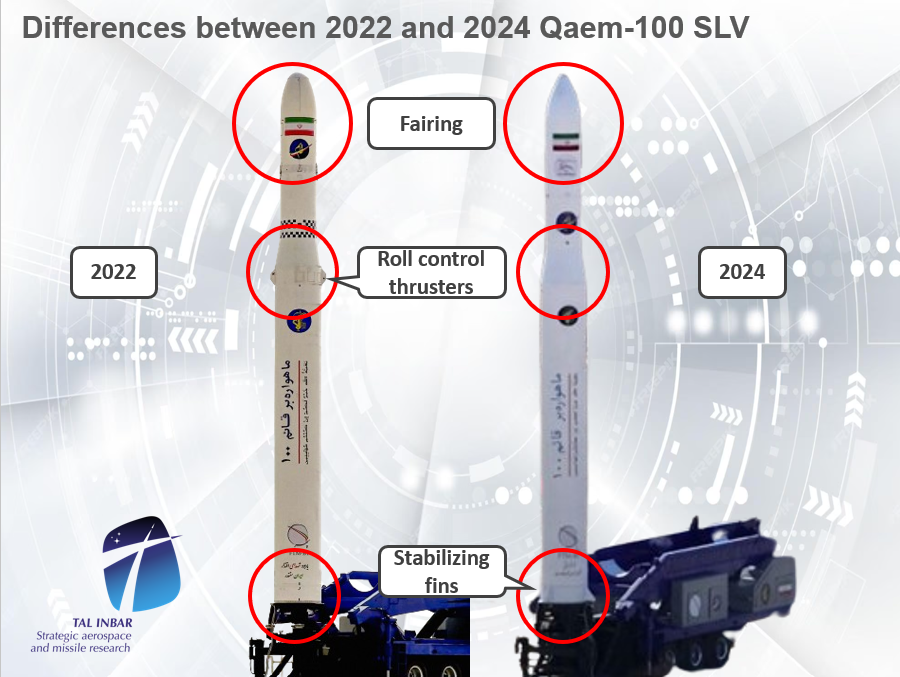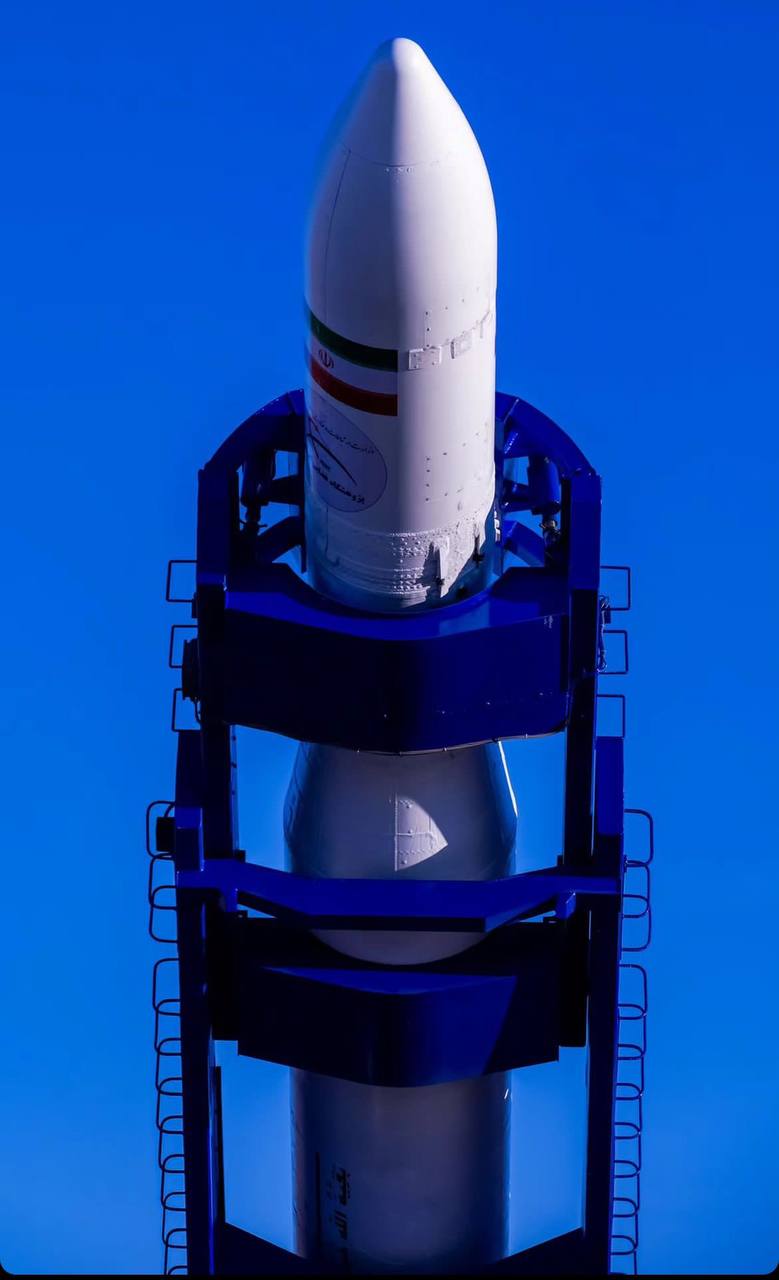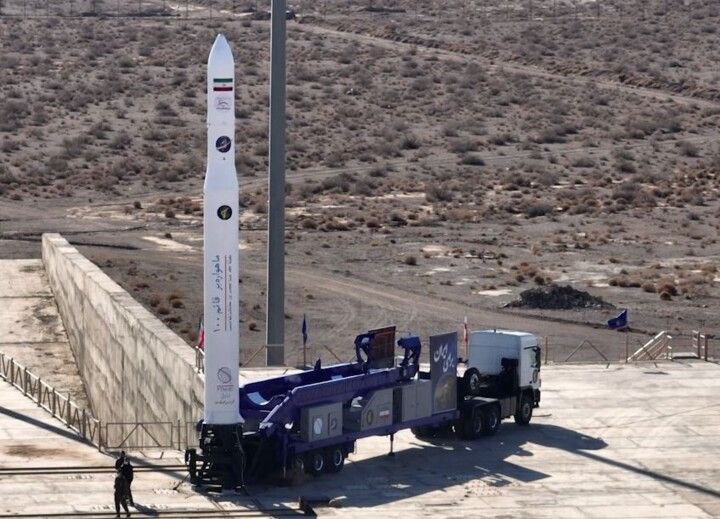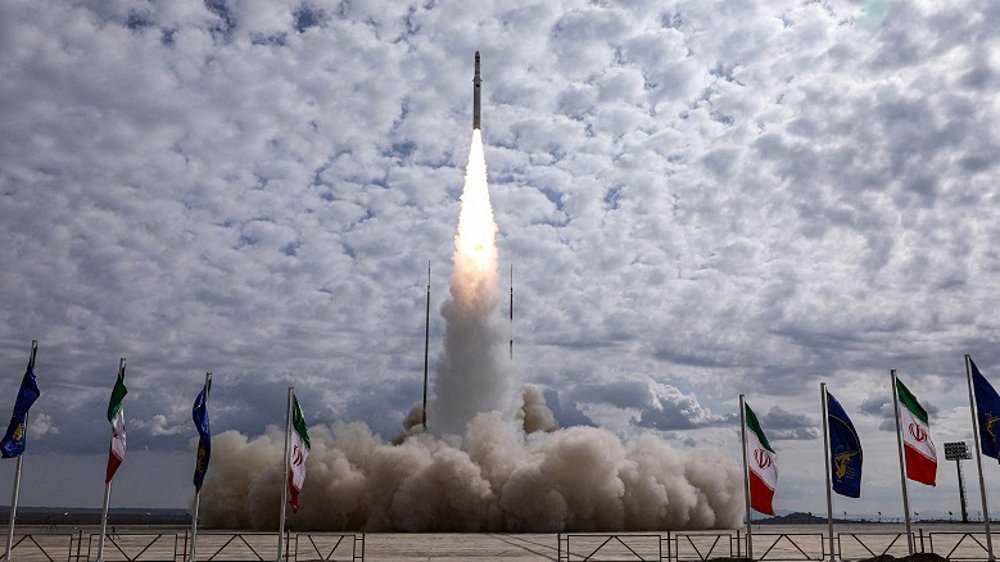Iran’s Space Program: A Strategic Cloak for ICBM Ambitions?
At the heart of this surge is the Qaem-100, a three-stage, solid-fuel satellite launch vehicle (SLV) whose technical configuration and trajectory performance closely mirror that of an intercontinental ballistic missile (ICBM) in its early development phase.
(DEFENCE SECURITY ASIA) — In a series of high-frequency launches over recent months, Iran has intensified its space activities under the guise of civilian satellite deployment, signaling a sophisticated evolution in both aerospace capability and potential military application.
At the heart of this surge is the Qaem-100, a three-stage, solid-fuel satellite launch vehicle (SLV) whose technical configuration and trajectory performance closely mirror that of an intercontinental ballistic missile (ICBM) in its early development phase.
Originally unveiled in 2022 and later employed in a failed attempt to place the ‘Nahid’ satellite into orbit in 2023, the Qaem-100 initially featured a rounded nose cone and liquid-fuel roll-control thrusters — conventional components for orbital missions.
However, the successful launch of the ‘Soraya’ satellite just days ago, placing it into a 750-kilometer low Earth orbit, revealed a markedly different rocket design, one that raises serious questions about Iran’s true strategic intentions.
Most notably, the nose cone has been reengineered into a sharply tapered shape — a hallmark of re-entry vehicle optimization commonly seen in ICBM designs intended to survive atmospheric return at hypersonic velocities.
Additionally, the removal of liquid-fuel roll-control thrusters, replaced by a more simplified configuration, suggests a move toward greater storage longevity, reduced maintenance demands, and rapid launch readiness — traits highly desirable in military missile systems.
Equally telling is the integration of four aerodynamic stabilizing fins at the base of the rocket, an unmistakable design choice borrowed directly from long-range ballistic missile architecture, enhancing in-flight stability over vast distances.

While Iranian officials continue to insist that the Qaem-100 and its associated space program are strictly for peaceful scientific and communication purposes, seasoned defence analysts remain unconvinced, pointing instead to a textbook example of dual-use technology being advanced under the radar.
“The launch of satellites is simply a convenient bonus — the real objective is clearly the development and refinement of ICBM infrastructure,” noted one regional military observer familiar with Iranian missile doctrine.
The timing of these technological shifts is particularly troubling given that Iran has simultaneously accelerated its nuclear enrichment program, now producing approximately nine kilograms of highly enriched uranium (U-235) per month — a level approaching weaponization thresholds.
This convergence of long-range delivery systems and nuclear material stockpiling positions Iran perilously close to latent nuclear power status, a strategic shift that would profoundly reshape the balance of power in the Middle East and beyond.
For the United States and Israel, the dual-track progress in missile and nuclear capability represents a rapidly narrowing window to respond diplomatically or militarily before Iran crosses an irreversible threshold.
Since its introduction, the Qaem-100 has been used in at least two satellite launches — the first in 2023, which ended in failure, and the most recent Soraya mission, which marked a notable technical success and potentially the maturation of Iran’s solid-fuel SLV platform.
Yet behind the orbital achievements lies a more consequential question — is Iran merely testing space vehicles, or is it discreetly assembling the critical components of a future ICBM arsenal under the protective veil of scientific exploration?

Technical Blueprint of Iran’s Qaem-100 Rocket
The Qaem-100, developed by the Islamic Revolutionary Guard Corps (IRGC) Aerospace Division, represents the most advanced iteration in Iran’s evolving suite of solid-fuel SLVs — a class of systems long recognized for their potential conversion into ballistic missiles.
-
Type: Three-stage solid-fuel satellite launch vehicle
-
Propulsion System: All stages powered by solid propellant — ideal for rapid deployment and prolonged storage
-
Length: Estimated to exceed 18 meters, indicating long-range capability
-
Diameter: Approximately 1.25 meters
-
Launch Mass: Estimated at 32 metric tons
-
Payload Capacity: Designed to carry 80–100 kg to Low Earth Orbit (LEO)
-
Orbital Ceiling: Up to 750 km — sufficient for military surveillance satellites or dummy re-entry testing


-
Nose Cone: Aerodynamically sharpened for potential re-entry applications
-
Stabilizers: Fitted with four rear-mounted fins, enhancing flight control and trajectory stability
-
Roll Control System: Transitioned from liquid-fuel thrusters to simplified solid-state architecture
-
Stated Purpose: Officially framed as a tool for scientific and communications satellite launches
-
Strategic Potential: Exhibits all key attributes of a preliminary ICBM test vehicle — range, payload capacity, fuel type, and structural design
In the broader geo-strategic landscape, the Qaem-100 is more than a vehicle for orbital payloads — it is a warning flare signaling Iran’s creeping proximity to long-range strike capability that could, in future, carry not just satellites, but warheads.
— DEFENCE SECURITY ASIA



Funny that most criminal counties like the west and Israel are never talked about when it comes to Iran then it seen different.